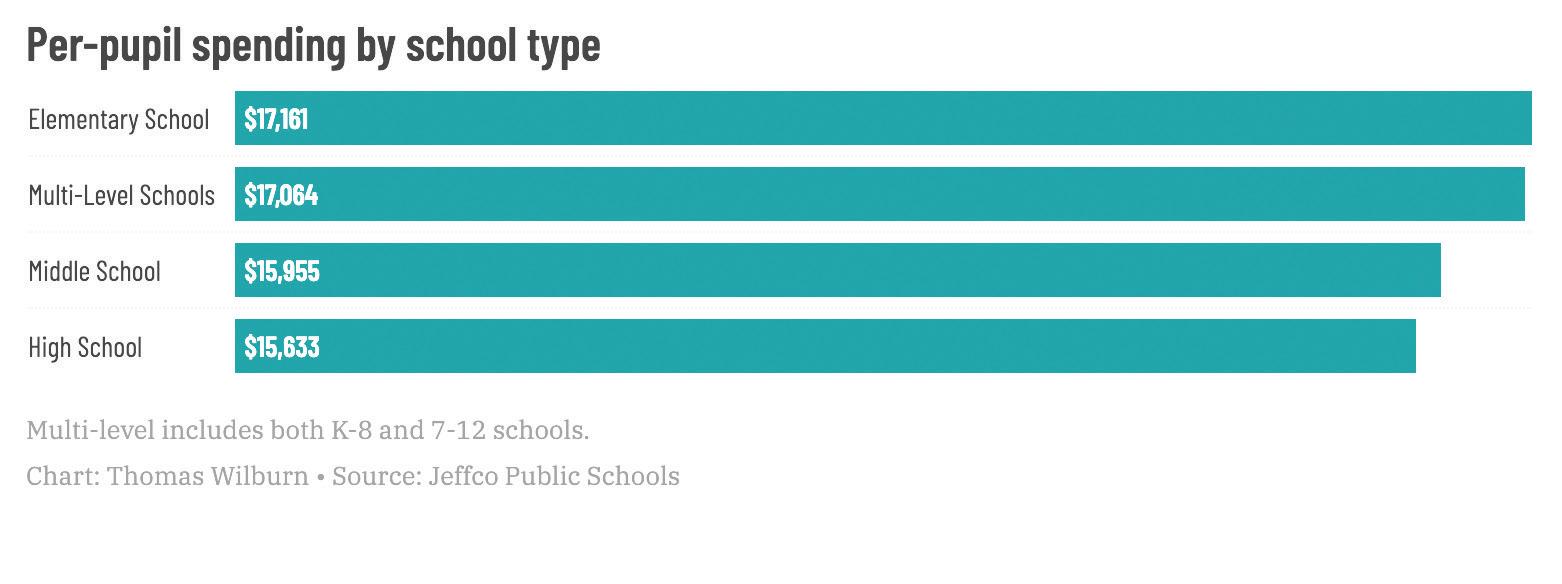
2 minute read
CLOSURES
could absorb displaced students.
Compared with elementary schools, Je co’s 22 district-managed middle and K-8 school facilities tend to be in better condition, and have a narrower range of enrollment and utilization. Some regions, or articulation areas as the district calls them, have only one middle school fed by all the elementary schools, further complicating closures.
Here are some takeaways about middle schools in Je co:
Of 22 neighborhood middle schools and K-8 schools in Je co, 18 are losing more students through the choice process than they attract, and only four schools gain students through that process. Colorado law and Je co’s system allow families to send their children to any school in the district or to transfer to schools in other districts that will accept them.
Of those 18, four schools lose more students than remain enrolled. Carmody Middle School, for example, had 892 students choose to attend di erent schools, according to district data, leaving only 626 students at the school.


A similar out-migration of students was one of the factors the district cited in emergency school closures including one two years ago.
Nearly all of the Je co-managed middle schools and K-8 schools are projected to lose students. According to district gures, seven middle or K-8 neighborhood schools will have fewer than 500 students next school year, and three of those schools are already occupying less than 50% of the capacity of their school building. ose three schools are: Coal Creek Canyon K-8, Moore Middle School, and North Arvada Middle School.
Coal Creek Canyon K-8 is projected to have 91 students next fall. e school currently serves 100 students. Moore Middle School is already being considered for consolidation. e school’s principal partnered with the principal of Pomona High School in asking the district to approve a plan to consolidate the schools and turn Pomona into a sixth grade through 12th grade school instead. e school district is expecting estimates of the cost of required building upgrades, before taking a vote this summer. e district’s overall average for all middle and K-8 schools is 36%. e ve schools that occupy more than 80% of their building average 25% of their students as qualifying for subsidized lunches.
At the other end of the range, one Je co middle school is over capacity. ree Creeks K-8 in Arvada enrolls 1,112 students. About 8% of the students there qualify for subsidized lunches, a measure of poverty, much lower than the district average. is school is the only one currently projected to have signi cant student enrollment growth next year.
Among the seven middle and K-8 schools in Je co that occupy less than 60% of their building’s total capacity, the schools average nearly 50% of students qualifying for free or reduced-price lunches, a measure of poverty.
Also, schools that have faster enrollment declines are more likely to have more students living in poverty. For example, among 10 schools with projected enrollment declines of more than 5%, an average of almost 42% of students qualify for subsidized meals, compared with about a 32% average at schools that have a small decline or that are projected to be growing.
Since schools are funded based on the number of students enrolled, schools with fewer students end up with smaller budgets and aren’t able to provide as many resources or learning opportunities as schools with more students.
SEE CLOSURES, P27










